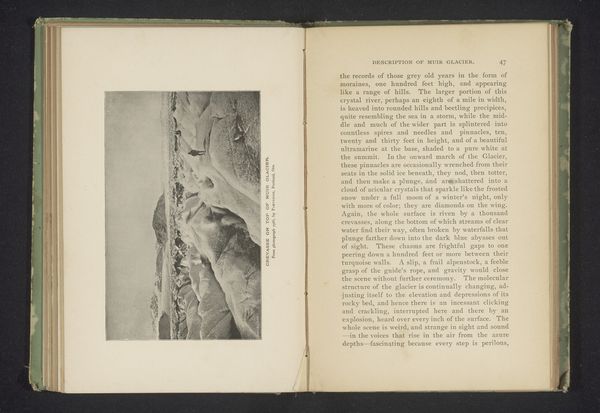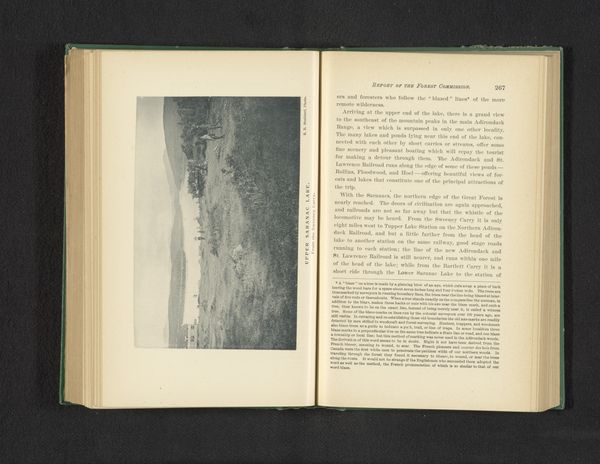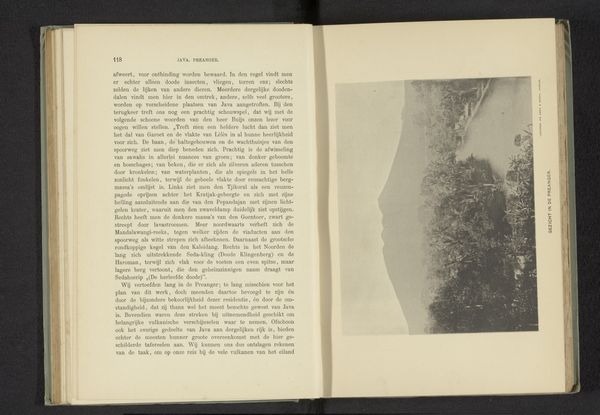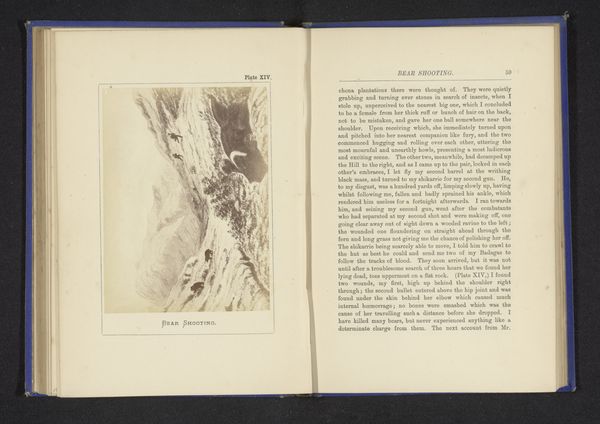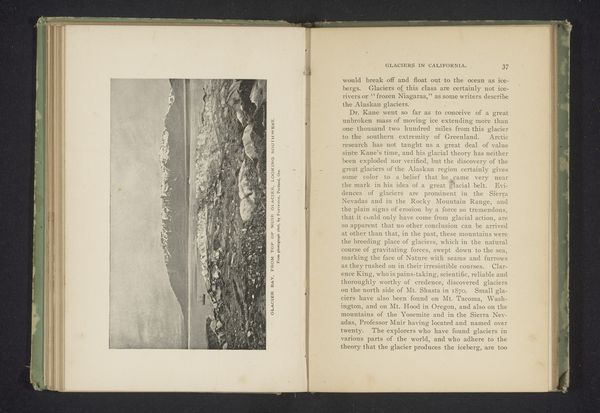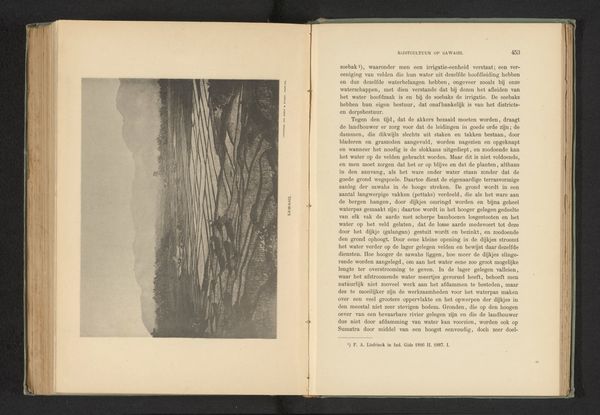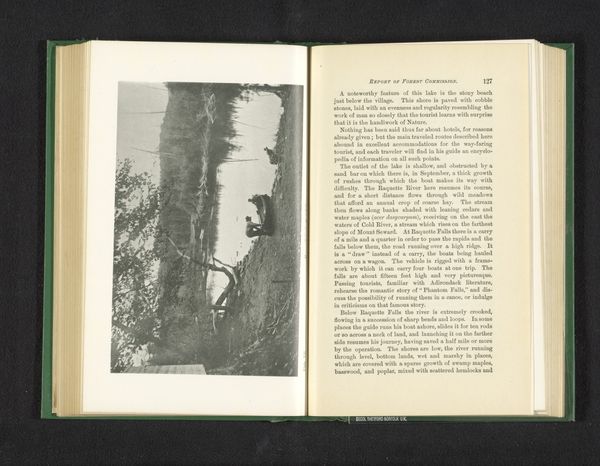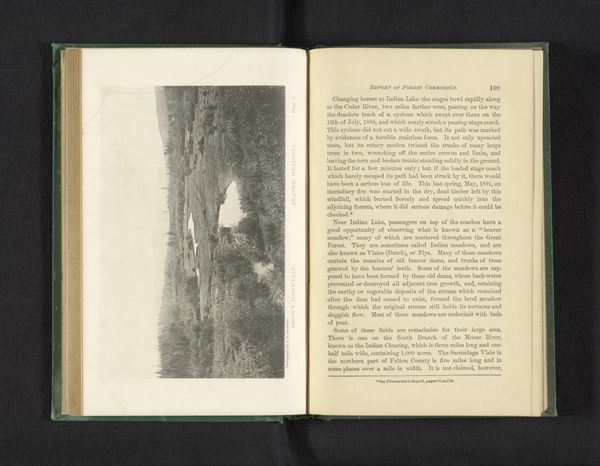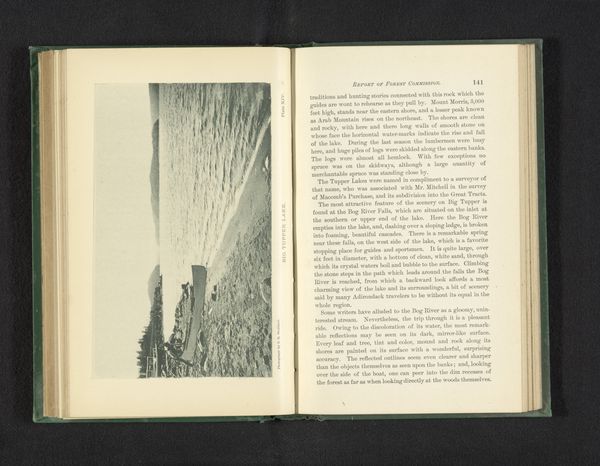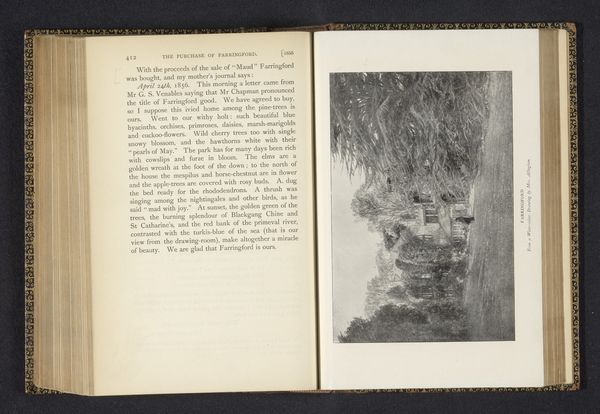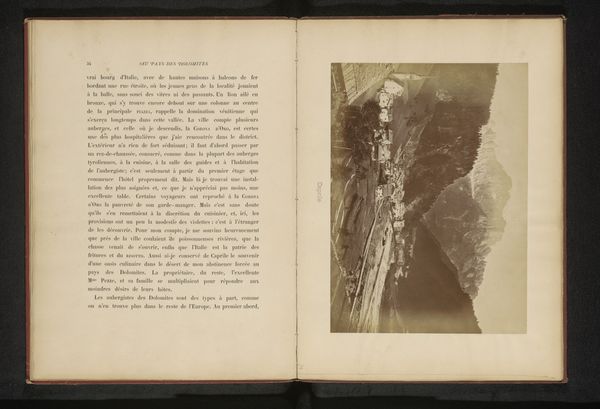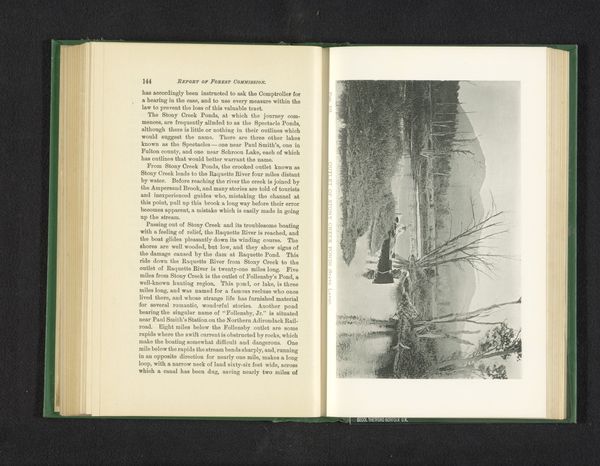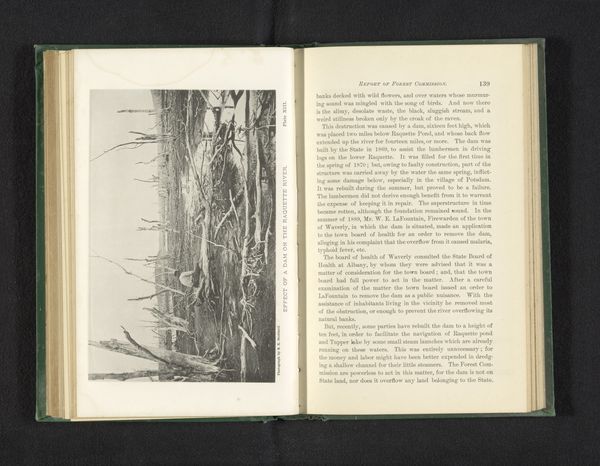
print, etching, photography
# print
#
etching
#
book
#
landscape
#
river
#
text
#
photography
Dimensions: height 81 mm, width 140 mm
Copyright: Rijks Museum: Open Domain
Curator: Here we have "Newport from the west," an etching dating to before 1897. The artwork presents as a simple monochromatic print within an open book. It seems almost like a document… or an illustration? What are your first thoughts? Editor: My first thought is the lack of dynamism—there's a stillness to the scene that contradicts the natural flow one might expect from a waterfront landscape. It’s muted and, dare I say, somewhat melancholic in its subdued tonality and static composition. Curator: It's interesting you point that out. The composition features this elevated view capturing Newport’s coastline and what looks like a river inlet; this specific structural framing inherently stabilizes the picturesque subject matter. Notice how this visual is placed next to textual paragraphs that start with: “Life of Peter Mackenzie… reminiscence, given by one who heard him relate it--.” This combination could suggest a deliberate choice to historicize a visual document with an explicit authorial voice through an autobiography excerpt? Editor: It's a deliberate juxtaposition, but for what effect? Is the image subservient to the text, merely illustrating a point in Mackenzie’s life, or is there a more nuanced dialogue at play? Consider the semiotics of landscape—its inherent connection to cultural identity, to ideas of progress and ownership. Curator: Absolutely. Consider also the etching technique—the intricate network of lines that articulate form and texture. The materiality is very evocative here, specifically to capture aerial distance, even through printed strokes. It invites an appreciation for process—both the physical act of creating the print, and the mental journey it invites as it compliments written records and collective narratives. Editor: And I circle back to my initial reaction—a muted landscape that feels both physically and historically distant. Perhaps this distance is critical. It compels us to reflect on how Newport’s visual identity, represented through reproducible prints alongside written narratives, evolved within the broader context of Mackenzie’s experience. Curator: Precisely. By decoding formal elements and historical contexts, this seemingly simple work becomes a nuanced window into our perceptions of both time and place, whether one responds emotionally or analytically. Editor: Yes, even something simple can show an introspective depth into past histories by contrasting written word and reproducible imagery.
Comments
No comments
Be the first to comment and join the conversation on the ultimate creative platform.
